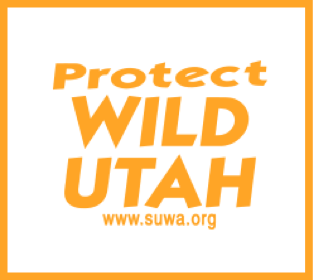|
For Immediate Release, June 16, 2009 Contact:
New Report on Climate Change Impacts in Southern Utah Shows Importance of Protecting Public Lands and Healthy Ecosystems SALT LAKE CITY A new report released by the U.S. Global Change Research Program which documents the national impact of climate change also shows that the southwestern portion of the country, including Utah, will bear the brunt of the anticipated changes. It found that temperature increases could be in the range of 4-6 degrees Fahrenheit or 7-10 degrees Fahrenheit depending on future greenhouse gas emissions, significantly more than the global average. These impacts include an expansion of existing deserts, drier conditions, water shortages, more intense storms, unstable soils, shrinking habitat for native plants and animals, and larger and hotter wildfires. “The findings of the report have enormous implications for the management of federal public lands,” explained Heidi McIntosh, SUWA associate director. “BLM in particular should be doing everything it can to enhance the ecological health of our landscapes to withstand the worst effects of climate change. This means reducing the level of ground disturbance from roads and off-road vehicles, oil and gas development and other uses, and protecting water resources, riparian areas, and soil stability.” Late in 2008, however, the BLM released six new land management plans for 11 million acres of federal public lands in Utah which did not analyze the impacts of climate change on any of the resources most affected, including fragile soils, water, wildlife, or ecosystem health. SUWA and others have challenged the BLM’s refusal to recognize the impacts of climate change, and to manage accordingly, in a lawsuit filed in federal court early this year. This report reinforces the findings of a 2007 report by the U.S. Geological Survey about the impacts of climate change on the Colorado Plateau. That report found that ORVs, roads, oil and gas development and other ground disturbing activities could lead to dry, unstable soils that result in dust storms similar to or greater than those of the Dust Bowl. The report, Global Climate Change Impacts in the United States, is at http://www.globalchange.gov/publications/reports/scientific-assessments/us-impacts. The U.S.G.S. report on the Colorado Plateau is at http://www.suwa.org/site/DocServer/USGS_CO_Plateau_Climate.pdf?docID=4101
|
|
|

 Southern Utah Wilderness Alliance
Southern Utah Wilderness Alliance
Protecting Utah's Redrock Country
